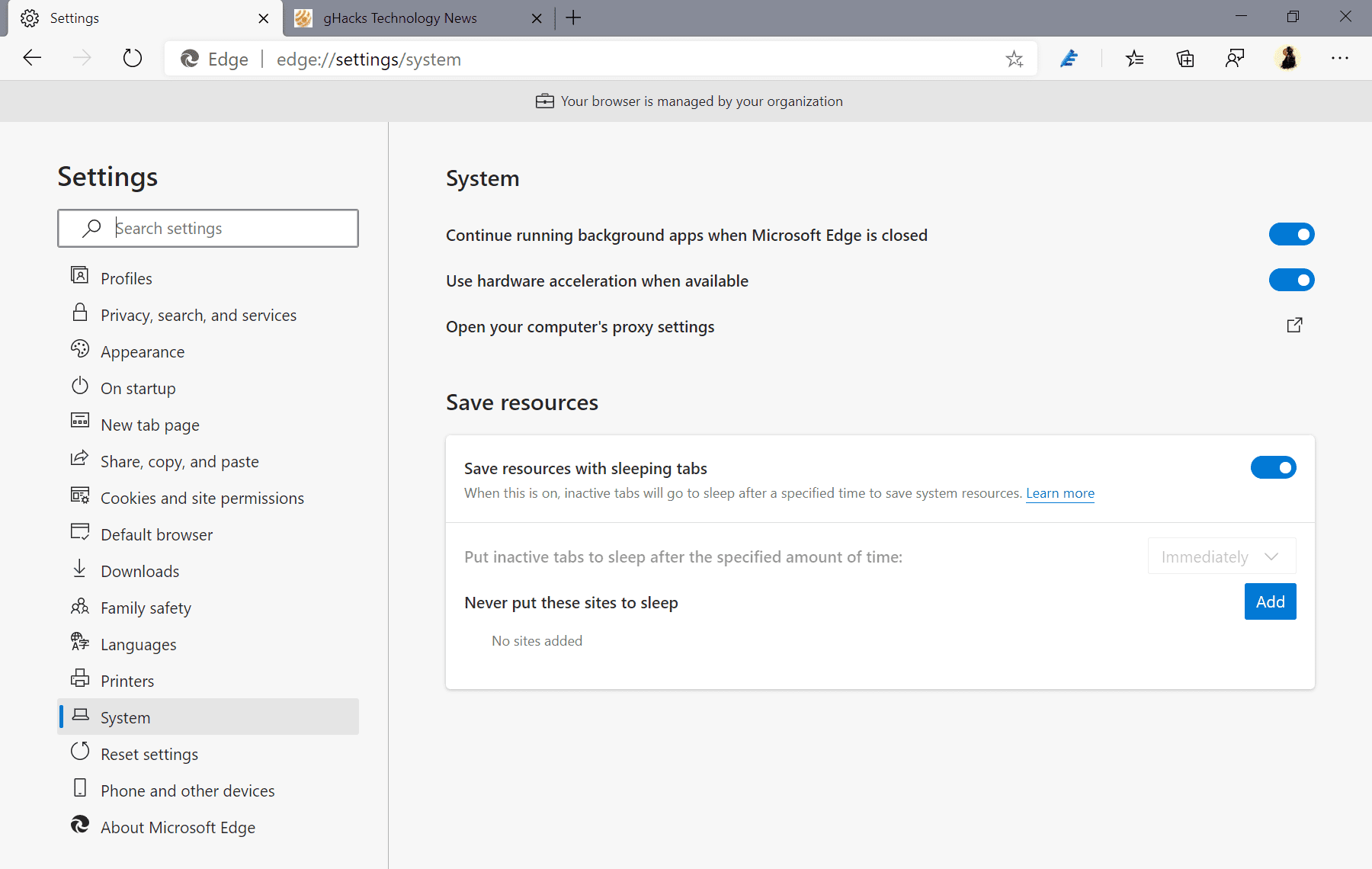Microsoft is running an experiment in the latest Microsoft Edge Canary version to find out if the changes can speed up the startup of the web browser. Called Startup Boost, it is available to a subset of Edge Canary users only at the time of writing. The feature is not available as an experimental flag that users can enable in the browser to make use of it. Additionally, it is only available for Edge on Windows and not other operating systems and platforms.
Startup Boost configures the Windows operating system to load a number of core Microsoft Edge files on startup to speed up the loading of the web browser by the user once the operating system’s desktop has loaded; this is done with low priority to avoid interference with the startup of the system. In the best case, users should not notice a delay in system start but an improvement when Edge is started.
Microsoft released a Startup Boost FAQ on its Tech Community website. Users who have been selected for the experiment can control Startup Boost from this page in Edge: edge://settings/system.
Just open the page in the browser’s address bar and change the status of the Startup Boost feature (Enabled or Disabled). If you don’t see Startup Boost on the page, you cannot use it at the time of writing (the screenshot below shows a system settings page without the feature as my system has not been selected by Microsoft for the experiment).

Microsoft explains the benefits of Startup Boost in the following way:
When you log on after device start-up or restart or when your browser is closed, Microsoft Edge will start more quickly when it is launched from the taskbar, desktop, and hyperlinks embedded in other applications.
Company engineers monitor the data of the experiment and may remove the feature from devices that don’t see a positive impact. The feature is being rolled out to more devices, and will land eventually on devices that did not have it already.
Organizations may use a policy to enable or disable the feature. Microsoft does not reveal which policy in the FAQ though.
Closing Words
Devices with slow hard drives and processors, and little RAM, may see the most improvements thanks to the preloading of parts of the Edge browser. The gain will likely be negligible on devices that use cutting edge hardware, e.g. a fast NVMe SSD and a modern processor.
Now You: Would you run your browser at startup if it resulted in a significant loading performance gain?
Thank you for being a Ghacks reader. The post Microsoft is testing a startup booster for its Edge browser appeared first on gHacks Technology News.
